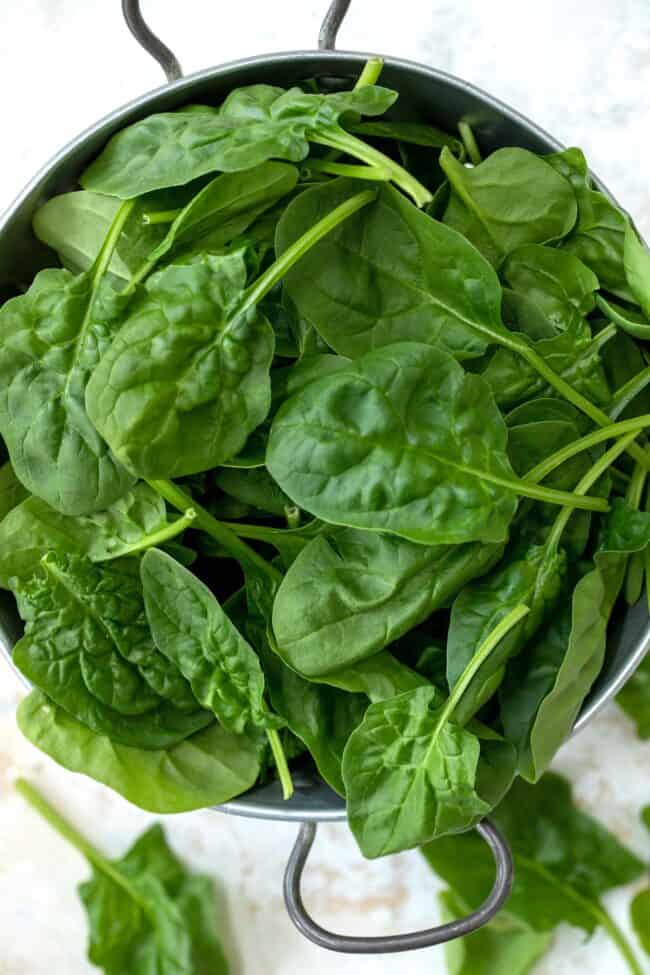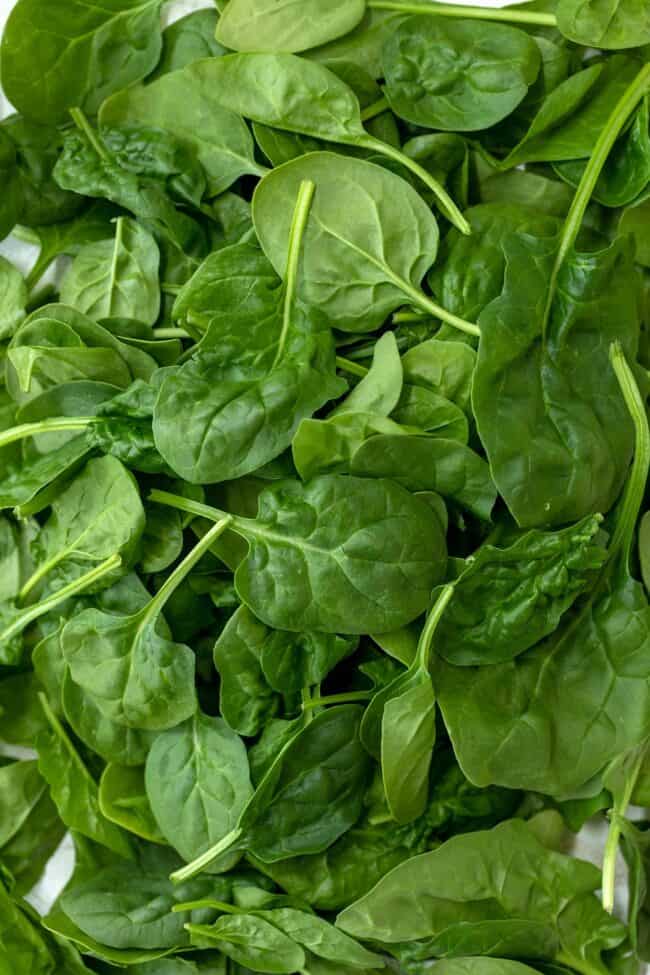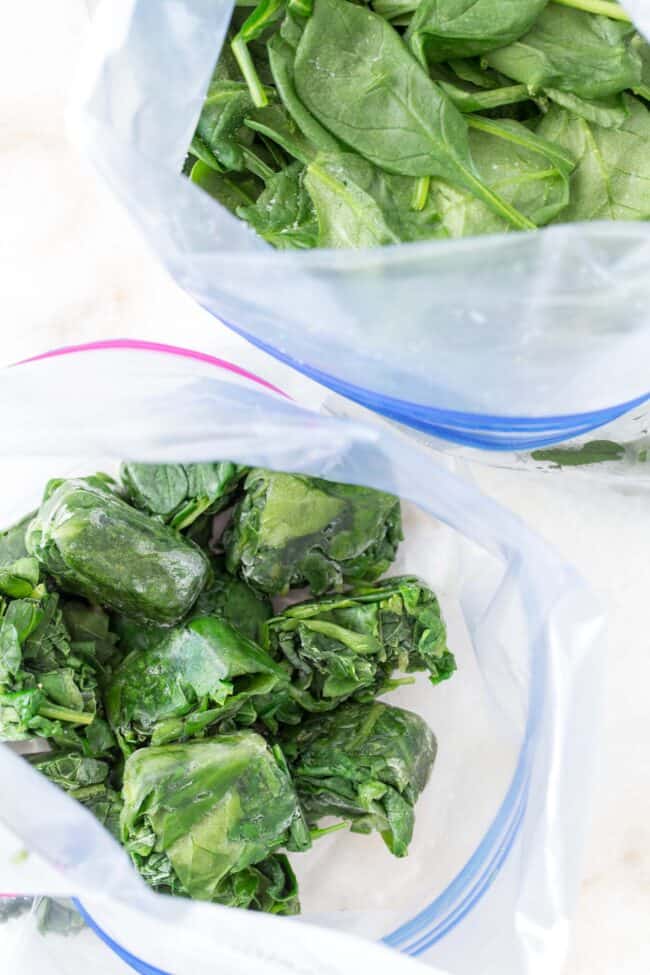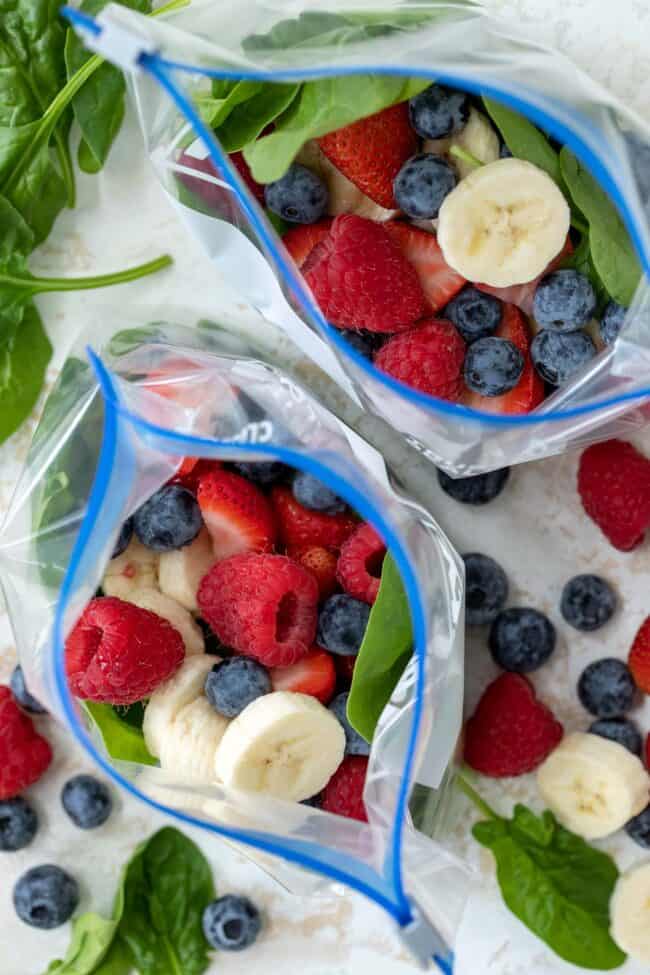Spinach
Here’s everything you need to know about Spinach, like how to choose it, how to store spinach leaves, baby spinach vs spinach, plus 12 Spinach Recipes to help you incorporate more of this leafy green into your diet.
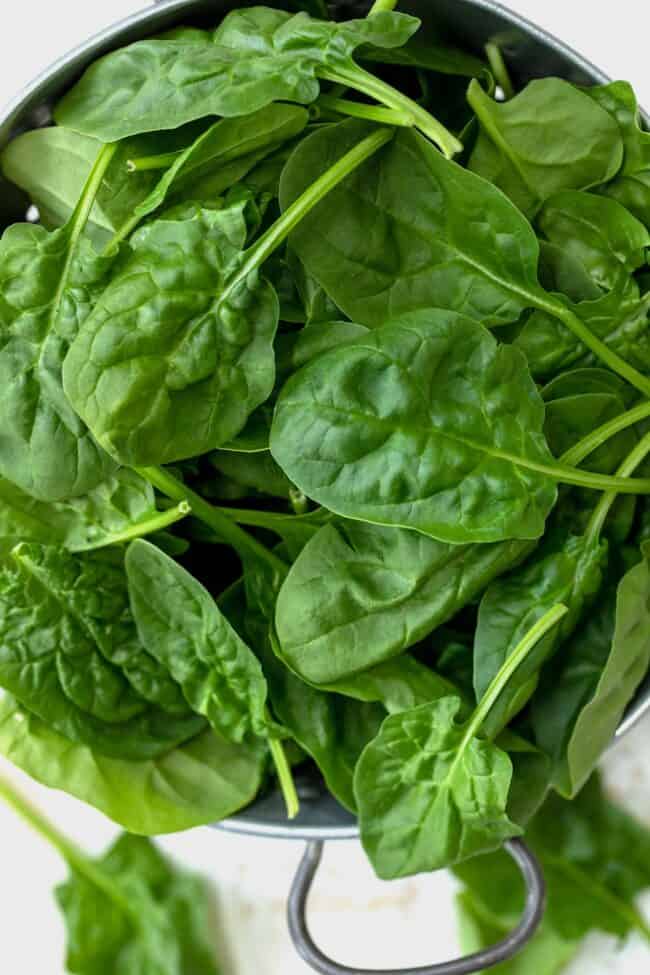
Fresh spinach leaves are delicious to toss into salads or add to sandwiches. Or you can chop them up and toss into soups, stews, skillets and casseroles. I’ve also provided you with 12 recipes below for more inspiration.
What is Spinach?
Spinach is a member of the Cheopdiaceae (goosefoot) family, which also includes Swiss chard and beets. It has a rich, hearty flavor that is delicious to eat both raw or cooked. It has tender leaves with thin stems that are also edible. It’s believed that it originated in Asia and arrived in Europe sometime in the Middle Ages.
The most common type found in grocery stores is called Savoy. There are other types o that can be found at farmers’ markets and health food stores:
- Baby spoon: This is similar to Savoy but it is smaller in size. It’s crispy and sweeter that larger spinach leaves.
- Flat leaf or smooth leaf: This type has spade-shaped leaves that clean up easier than wrinkled leaf varieties. This type is often used for canning and freezing, as well as tossing in soups and making baby food with.
- Red: These are round, thick and rich green leaves with a red center. These leaves are tender and delicious.
- Savoy – These leaves are wrinkled, curly and dark green in color. It’s often sold fresh in bunches and used mostly for salads.
- Semi-Savory – These leaves are similar to Savoy but they’re easier to clean.
Baby Spinach vs Spinach
Baby spinach are leaves that have been harvested before they are fully mature, and baby spinach leaves are more tender with a sweeter taste than full leaf.
What About Canned
Canned is lower in nutrients than fresh. It may also be high in sodium and other additives. Fresh or frozen is always a better option if possible.
How to Choose the Best
Fresh spinach leaves are sold both loose and in packages. Choose smaller leaves (like baby spinach) with a rich green color and a crisp texture. Avoid wilted, crushed, bruised or those with yellow spots and insect damage. Look for stems that are thin (like baby spinach leaves) while thicker stems may indicate overgrown spinach which may be tough and bitter tasting. It should smell slightly sweet (never musty or moldy).
How To Store Spinach
If you’ve wondered how to store spinach so it doesn’t turn to mush right away – here’s the trick. Don’t wash it before storing in the refrigerator, otherwise it will begin to wilt and decay just after a day or two. Instead leave the leaves in the bag or wrap it came home from the store in, or wrap loose leaves in paper towels and place in a large plastic bag. Store in the refrigerator crisper where it will keep for 3-5 days.
How Do You Clean Spinach?
It may have sand and dirt trapped in the leaves and stems so the leaves require careful rinsing. Trim off any roots and separate the leaves then drop them in a large bowl of water. Agitate the leaves in the water gently with your hand. Remove the leaves (the sand and dirt will settle to the bottom of the bowl). Repeat the process with clean water until the leaves are clean. Even though some packaged spinach is marked “prewashed” it should still be rinsed before consuming.
After you’ve rinsed the leaves you can dry them in a salad spinner or shake them dry in a colander. Wrap in paper towels and place in a plastic bag in the refrigerator for an hour or two before using fresh in salads or smoothies.
If you’re going to be cooking it, then you don’t need to dry it first before you steam, saute or toss in soups and stews.
Loose leaves usually have more stem on the leaves that packaged leaves, so you’ll want to pinch off the stems and the midribs (the part of the stem that goes into the leaf) if they’re thick and leathery.
Can You Freeze It?
Yes, you can freeze it! It’s an easy process and it’s a great way to store it for adding to soups, stews, skillets, casseroles and sauces all year long. I have two methods that I use, one is freezing the leaves whole to add to smoothies, and the other is for adding frozen leaves to soups, stews and skillets. Want to know more? Go to How to Freeze Spinach for tips and tricks to freezing it.
Spinach Recipes
Looking for ways to add more of this leafy green to your diet? Here are 12 recipes to give you inspiration.
- Blend with berries, frozen banana and oat milk to make smoothies like this Blueberry Spinach Smoothie
- Make homemade smoothie packs to freeze for smoothies (2 cups spinach and 1-1/2 cup fruit) pop in your blender with oat milk (or your favorite nut milk) and blend.
- Stuff chicken breasts with a mixture of this leafy green and cheese and bake.
- Blend with Parmesan cheese, lemon juice and olive oil to make pesto.
- Add to skillet meals like this Italian Chicken Skillet, Vegan Breakfast Skillet and this Chicken Chermoula
- Whisk together with onion, leek and eggs to make a Spinach Leek Frittata
- Stuff baked potatoes with this Wilted Lemon Garlic Spinach and grated Parmesan cheese or simply serve it as a side to grilled chicken.
- Stir into soups like this Tuscan White Bean Soup and Italian Wedding Soup
- Toss leaves into salads like this Spinach Berry Antioxidant Salad and Spinach Quinoa Salad
- Blend leaves with chickpeas to make Spinach Hummus
- Saute Spinach and Chickpeas with onion and tomatoes for an easy vegan dish.
